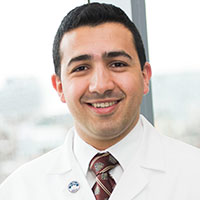Building a “T-Shaped” Career
February 21, 2018 | Akl C. Fahed, MD, MPH
Career Development
The best advice that I have received in recent years was from Marc S. Sabatine, MD, MPH, FACC, chairman of the Thrombolysis in Myocardial Infarction Study Group, after rotating with him in the coronary care unit. He said, "Akl, you can be good at two things, but you can only be famous for one, so you need to pick!" Sabatine is a phenomenal clinician, but he is most known for leading major cardiology clinical trials. So, what will be your claim to fame?
Whether your interest lies in clinical leadership, fundamental research, health policy or others, you should define your number one focus. This focus would be the short appositive phrase that follows your name for the rest of your life.
A successful career is one that is "T-shaped." The vertical element of the "T" represents depth in a specific subject that you are best at and recognized for. This expertise requires focus and time, both of which are hard to find as a fellow who gets pulled in many directions. Spending a large chunk of time and focus in one area within cardiology does not preclude being good at other areas. The key is to accept that you can still do other things you enjoy, but only do a few of them and for small portions of time. These other elements are what constitute the breadth, or the horizontal element, of your "T-shaped" career. The breadth is just as important as the depth.
The health care system we work in today has evolved from that of our predecessors. There is unprecedented uncertainty about the future of health care reimbursement and research funding. For example, look at leadership in academia. It has evolved from an era where the superb clinician was the leader (1900 – 1945), up until the National Institutes of Health funding flourished and put leadership in the hands of physician-scientists (1945 – 1970). This was followed by an era where cost-shifting and reimbursement from Medicare and Medicaid put power in the hands of high-revenue generators such as surgeons and interventional cardiologists (1965 – 1990), and finally to an era where clinical revenue is declining and there is increasing focus on collaboration with industries. Today's academic leaders must understand the complexity of health care economics and be able to partner with industries. So, who are tomorrow's leaders and how can you be one?
When thinking of the future, be optimistic and remember that not only challenges but also opportunities will be different. A "T-shaped" career can help you turn challenges into opportunities. The depth of your career will distinguish and anchor you; focusing on a problem and solving it is a learned skill, and having depth of understanding in one subject will eventually enable you to delve deep in other subjects. Think about the 60-year-old professor of genetics who is doing whole genome sequencing using advanced computational tools. Computers did not even exist during his or her postdoc! Then think about the next senior interventionalists you meet, who learned most of what he or she does many years after training.
The breadth is equally important. If your attention is exclusive to your area of focus, you will miss the opportunity to branch out to other fields and see opportunities around you. The breadth makes it easier to adapt to change. Not uncommonly, greatness comes from learning something from one field and applying it to another.
Next time you face a career decision, think of your "T" and decide what falls in the vertical and what falls in the horizontal. Then, treat it accordingly.

This article was authored by Akl C. Fahed, MD, MPH, Fellow in Training (FIT) at Massachusetts General Hospital in Boston, MA.

